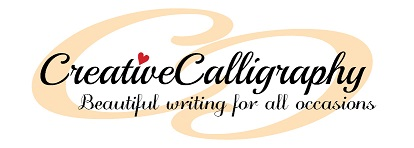The Art of Handwriting digital exhibition
Having played host to some rather special calligraphy exhibitions last year, the north east is off to a flying start for 2020.
The Art of Handwriting is a digital exhibition exploring the changing role of handwriting between the late middle ages and the early modern period – but it currently has a physical presence at Newcastle University’s Philip Robinson Library.

The project is a result of collaboration between Dr Aditi Nafde and Dr Matthew Coneys, staff at Newcastle University Library’s Special Collections and Archives and calligraphers Cherrell Avery, Sue Hufton, Susie Leiper, Dr Manny Ling and Tim Sokell.
The exhibition juxtaposes books and documents from Newcastle University Library’s Special Collections and Archives, with the work of professional calligraphers in order to consider handwriting’s place in our past, present and future.

The future of handwriting…
Dr Nafde is a lecturer in medieval literature and Dr Coneys is a research associate within Newcastle University’s School of English Literature, Language and Linguistics.
Dr Nafde is leading an exploration of the role handwriting will play in the digital age through the Manuscripts After Print research project, funded by the Arts and Humanities Research Council, which runs until July this year.
It includes the development of a new digital reading and handwriting app, called Hands-on Reading, which explores how the digital medium allows handwriting to be used in new and innovative ways. An early version is currently available to test.

Dr Nafde said: “Books are changing. We are in the midst of a ‘digital revolution’ which is altering the way books are available and how they are made, sold and read; yet printed books and handwritten crafts have experienced a surge in popularity.
“This project takes advantage of this crucial moment in the history of the book to think about how books were made and read in the past, how they are made and read now and how they will be made and read in the future.”
The Philip Robinson Library is open to the public from 8.30am to 8pm.
